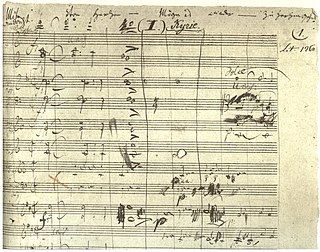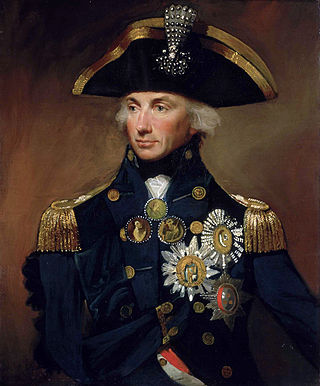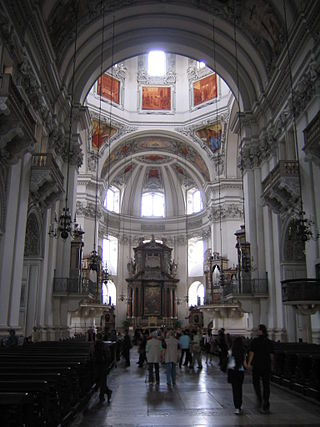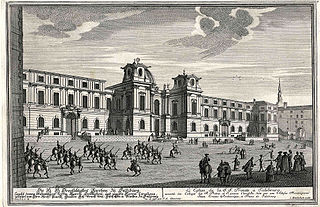Description
Missa Santissimae Trinitis is the composition of combined sacred style, which not only divides the liturgy text only according to the conventional Kyrie, Gloria, Credo, Sanctus and Agnus Dei, but also into shorter parts which form independent musical movements. In each of them the instrumental grouping, character and style differ. Old and modern techniques are joined, therefore, not only in the sense of changing the individual movements, but they also penetrate each other within.
The mass is divided into 19 individual movements. Above all, the choruses reveal the strong influence of contemporary opera and concerto, and solo arias. The solo arias (in Part II, alto, in VI and XV, soprano) are much more extensive than other Zelenka's mass arias of the 1720s. They are introduced by virtuoso ritornellos. Orchestral parts are independent and rich with melodiously flowing solo voices. Similarly, the concertante choruses (Parts IV, IX and XI) are represented with modern ritornellos. The orchestra parts in these movements also are independent and often dominate over the simple homophonic chorus. The influence of the concerto structure is revealed in the contrast between solo vocal and choral parts. The opposite pole of the chorus concerto are the massive choral fugues - their dialogue here not only demonstrate the composer's technical mastery, but also illustrate the intellectual depth and significance of the work.

The Mass in B minor, BWV 232, is an extended setting of the Mass ordinary by Johann Sebastian Bach. The composition was completed in 1749, the year before the composer's death, and was to a large extent based on earlier work, such as a Sanctus Bach had composed in 1724. Sections that were specifically composed to complete the Mass in the late 1740s include the "Et incarnatus est" part of the Credo.

The Missa solemnis in D major, Op. 123, is a Solemn Mass composed by Ludwig van Beethoven from 1819 to 1823. It was first performed on 7 April 1824 in Saint Petersburg, Russia, under the auspices of Beethoven's patron Prince Nikolai Galitzin; an incomplete performance was given in Vienna on 7 May 1824, when the Kyrie, Credo, and Agnus Dei were conducted by the composer. It is generally considered one of the composer's supreme achievements and, along with Bach's Mass in B minor, one of the most significant Mass settings of the common practice period.

Great Mass in C minor, K. 427/417a, is the common name of the musical setting of the mass by Wolfgang Amadeus Mozart, which is considered one of his greatest works. He composed it in Vienna in 1782 and 1783, after his marriage, when he moved to Vienna from Salzburg. The large-scale work, a missa solemnis, is scored for two soprano soloists, a tenor and a bass, double chorus and large orchestra. It remained unfinished, missing large portions of the Credo and the complete Agnus Dei.

The Missa in angustiis, commonly known as the Nelson Mass, is a Mass setting by the Austrian composer Joseph Haydn. It is one of the six masses written near the end of his life that are seen as a culmination of Haydn's composition of liturgical music.

Missa in tempore belli is a setting of the mass by Joseph Haydn. It is catalogued Mass No. 10 in C major. Known also as the Paukenmesse due to the dramatic use of timpani, it is one of the most popular of his fourteen mass settings. The autograph manuscript contains the title "Missa in tempore belli" in Haydn's handwriting.

The Krönungsmesse, composed in 1779, is one of the most popular of Wolfgang Amadeus Mozart's 17 extant settings of the Ordinary of the Mass. It can be classified as either a Missa brevis or a Missa solemnis because although it includes all the sections of the Ordinary, it is relatively short.

Missa brevis usually refers to a mass composition that is short because part of the text of the Mass ordinary that is usually set to music in a full mass is left out, or because its execution time is relatively short.

Gioachino Rossini's Petite messe solennelle was written in 1863, possibly at the request of Count Alexis Pillet-Will for his wife Louise to whom it is dedicated. The composer, who had retired from composing operas more than 30 years before, described it as "the last of my péchés de vieillesse".
Giovanni Benedetto Platti was an Italian Baroque composer and oboist.

The Missa Cellensis in honorem Beatissimae Virginis Mariae in C major by Joseph Haydn, Hob. XXII:5, Novello 3, was originally written in 1766, after Haydn was promoted to Kapellmeister at Eszterháza following the death of Gregor Joseph Werner. The original title as it appears on the only surviving fragment of Haydn's autograph score, that has been discovered around 1970 in Budapest, clearly assigns the mass to the pilgrimage cult of Mariazell, Styria. Until that discovery, the work was known as Missa Sanctae Caeciliae, or in German Cäcilienmesse, a title probably attributed to the mass in the 19th century. Whether the alternative title refers to a performance of the piece by the St. Cecilia's Congregation, a Viennese musician's fraternity, on some St. Cecilia's day, as has been suggested, remains speculation.

The Mass in B minor is Johann Sebastian Bach's only setting of the complete Latin text of the Ordinarium missae. Towards the end of his life, mainly in 1748 and 1749, he finished composing new sections and compiling it into a complex, unified structure.

The Missa in honorem Sanctissimae Trinitatis in C major, K. 167, is a mass composed by Wolfgang Amadeus Mozart in June 1773. It is scored for SATB choir, violin I and II, 2 oboes, 2 clarini, 2 trumpets, timpani and basso continuo.

The Credo Mass in C major, K. 257, is a mass composed by Wolfgang Amadeus Mozart in 1776. It is scored for SATB soloists, SATB choir, violin I and II, 2 oboes, 2 clarini, 3 trombones colla parte and basso continuo.

The Missa solemnis in C major, K. 66, is a mass composed by Wolfgang Amadeus Mozart in 1769. It is scored for SATB soloists and choir, violins I and II, viola, 2 oboes, 2 horns, 2 clarini, 2 trumpets and basso continuo.
The Missa Votiva is a mass composed by the Czech Baroque composer Jan Dismas Zelenka in 1739, Dresden. The Missa Votiva is about seventy minutes long, and its twenty parts range from forty-five seconds to over seven minutes in length.

The Missa angelica is a mass composed by Józef Świder in 1998. He scored it for soprano or tenor solo, a four-part choir, string orchestra and percussion. He also wrote a version for women's choir and keyboard instrument. It was published by Carus-Verlag in 2009.

Mozart Mass K. 139 is a 45-minute classical studio album on which Mozart's Waisenhaus-Messe is performed by Gundula Janowitz. Frederica von Stade, Wiesław Ochman, Kurt Moll, the Chorus of the Vienna State Opera and the Vienna Philharmonic Orchestra under the direction of Claudio Abbado. It was released in 1976.

Missa Providentiae is a Kyrie–Gloria Mass in D minor composed by Antonio Caldara, which around 1728 was expanded into a Missa tota by Jan Dismas Zelenka: this composer derived a Sanctus and Agnus Dei from Caldara's Kyrie and Gloria, and added a Credo, ZWV 31, of his own hand. Around 1738–1741, Johann Sebastian Bach made a copy of a Sanctus, BWV 239, which was based on the first section of the Gloria of Caldara's Kyrie–Gloria Mass.

Missa Sanctae Caeciliae in G major, ZWV 1, is a mass for voices and orchestra by Jan Dismas Zelenka. It was completed in 1711 as his first work for the Dresden court.














